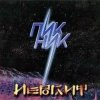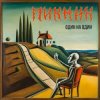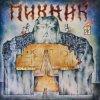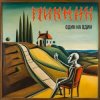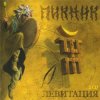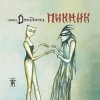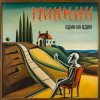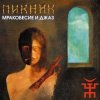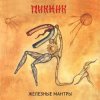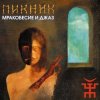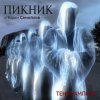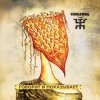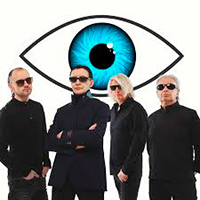
Piknik is a cult Russian rock band founded in 1978 in Leningrad (now Saint Petersburg). The group is one of the oldest and most original acts on the Russian rock scene. Their music blends elements of art rock, gothic rock, post-punk, and psychedelia with Eastern aesthetics, mysticism, and philosophical lyrics. The leader and permanent creative force of the band is Edmund Shklyarsky (vocals, guitar, songwriter), whose name has become synonymous with the band’s unique "Piknik-style."
Formation and Early Years (1978–1981)
Piknik was formed in 1978 by students of the Leningrad Polytechnic Institute. The original lineup included Edmund Shklyarsky (vocals, guitar), Oleg Garkusha (drums), Alexander Golovko (bass guitar), and Alexander Matsievsky (keyboards). Initially, the band performed covers of Western rock groups and experimented with progressive sounds inspired by Pink Floyd, King Crimson, and Genesis.
The name “Piknik” symbolized informality, a "break" from the gray Soviet reality, and inner freedom — a concept that would later become central to the band’s philosophy. By the late 1970s, Piknik stood out with its mystical sound and theatrical stage presentation — a signature feature that remains its hallmark to this day.
Breakthrough and Success in the 1980s
The early 1980s marked the band’s rise on the Leningrad rock scene. Piknik joined the Leningrad Rock Club and became an active participant in its festivals. The band drew audiences not only with its original music but also with its distinct stage aesthetics — black costumes, mysterious imagery, exotic instruments, and theatrical elements.
In 1982, the group released its debut album Dym ("Smoke"), featuring early hits such as "The Kingdom of the Crooked," "Smoke," and "Mousetrap." In 1984, they recorded Hieroglyph, followed in 1986 by the legendary Harakiri, a turning point in their career. This record solidified Piknik’s signature sound — dark, Eastern-inspired, mystical rock with a deep philosophical undertone.
By the late 1980s, the band released From Nowhere (1988) and a remastered version of Hieroglyph, both now considered Russian rock classics. Songs from this era — "A Little Fire," "Purple-Black," "The Shaman Has Three Hands" — entered the golden canon of Russian rock.
Piknik in the 1990s: Philosophy and Maturity
In the 1990s, despite the crisis in the music industry, Piknik continued to create ambitious conceptual albums, including:
- Nothing to Lose (1991) — with hits like "Night" and "Nothing to Lose";
- Kremlin (1994) — a socially and philosophically charged album with profound lyrics;
- Iron Mantras (1997) — combining rock with industrial influences.
During this period, the band expanded the theatricality of its concerts, introducing fire performances, mechanical figures, Eastern symbols, and shamanic motifs. Piknik’s live shows became mystical spectacles with elaborate visual dramaturgy and symbolism.
2000s: New Albums and Recognition
In the 2000s, Piknik maintained strong public attention. Albums such as:
- The Egyptian (2001)
- No One but Us (2007)
- Vampire’s Shadow (2008)
continued the band’s distinctive path — philosophical, metaphorical, and mystical. Songs like "The Lighthouse," "Prayer," and "There, at the Very Edge of the Earth" cemented Piknik’s status as one of the most original acts in Russian rock.
The group actively toured Russia, the CIS, and Europe, performing to sold-out crowds. Their shows evolved into audiovisual performances with fire elements, shadow installations, and Shklyarsky’s iconic stage persona — a mysterious philosopher-musician.
2010s–2020s: Continuity and Modernity
In the 2010s, Piknik continued to experiment with sound, releasing albums such as:
- Morse Code (2013)
- Stranger (2014)
- Ominous Things (2017)
- Cheerful and Angry (2020)
Throughout the decade, the band appeared at major festivals like Нашествие (Nashestvie) and Rock over the Volga, releasing visually rich, cinematic-style music videos.
Despite their long history, Piknik remains relevant: their songs receive radio play, and their videos gather millions of views. Shklyarsky’s lyrics remain multilayered — weaving together philosophy, esotericism, irony, and poetry.
Musical Style and Image
The band’s music defies simple categorization. It is primarily rooted in art rock and psychedelia, infused with Eastern motifs, electronic elements, and a theatrical approach.
Key features of their style:
- Mystical lyrics filled with metaphors and philosophical depth
- Eastern intonations and exotic instruments (sitar, theremin, string hybrids)
- Theatrical stage imagery — masks, fire, puppets, lighting effects
- Influences from literature, philosophy, alchemy, and Eastern mythology
Piknik created a unique atmosphere — a “rock theater” where each song is a mystical story and every concert a performance.
Current Lineup
- Edmund Shklyarsky — vocals, guitar, leader, songwriter
- Marat Korchemny — bass guitar
- Stanislav Shklyarsky — keyboards
- Leonid Kirnos — drums
Legacy and Influence
Piknik holds a special place in Russian rock history. Many artists — from gothic rock acts to intellectual songwriters — cite them as an influence. The band’s unique artistic language made it not just a musical act but a cultural phenomenon.
Over more than 45 years, Piknik has become a symbol of the mystical side of Russian rock — a group where philosophy meets theater, and music becomes art.
Current Status
Today, Piknik remains active — touring with anniversary shows, releasing new albums, and staying true to its artistic vision. Their concerts continue to sell out, and their songs resonate with generations of listeners.
Piknik is not just a rock band, but a legend and cultural symbol of the Russian music scene, embodying the philosophy of mystical, intellectual rock.
